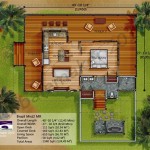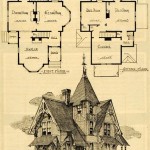A plot plan, also known as a site plan, is a scaled drawing that depicts the layout and arrangement of a building or structure on a specific piece of land. It provides a detailed overview of the property, including the location and dimensions of the building, driveways, walkways, patios, and other relevant features. Plot plans are commonly used during the planning and construction phases of a project to ensure that the design meets the specific requirements of the site and complies with local building regulations.
Plot plans are particularly useful for visualizing the relationship between the building and its surroundings. They allow architects, engineers, and contractors to plan for the efficient use of space, determine the optimal placement of utilities, and coordinate with other aspects of the project, such as landscaping and drainage. By providing a comprehensive representation of the proposed development, plot plans facilitate informed decision-making and help ensure that the final design is well-suited to the specific characteristics of the site.
In the following sections, we will delve deeper into the various elements and considerations involved in creating a plot plan for your house. We will explore the different types of plot plans, discuss the essential information they should include, and provide guidance on how to approach the planning process.
When creating a plot plan for your house, there are several important points to consider:
- Property boundaries: Define the legal boundaries of your land.
- Building footprint: Indicate the size and location of your house on the property.
- Driveways and walkways: Plan for vehicle and pedestrian access.
- Patios and decks: Designate outdoor living spaces.
- Landscaping: Include trees, shrubs, and other vegetation.
- Utilities: Show the location of water, sewer, gas, and electrical lines.
- Drainage: Plan for proper drainage to prevent flooding.
- Zoning setbacks: Ensure compliance with local building regulations.
- North arrow: Indicate the orientation of the plan.
- Scale: Use an appropriate scale to accurately represent the site.
By carefully considering these elements, you can create an effective plot plan that meets your specific needs and requirements.
Property boundaries: Define the legal boundaries of your land.
Clearly defining the legal boundaries of your land is crucial for several reasons. First, it establishes the extent of your property and prevents encroachment from neighboring landowners. Second, it helps ensure that your planned house and other structures comply with local building regulations, which often specify minimum setbacks from property lines. Third, it provides a clear understanding of where your responsibility for maintenance and upkeep begins and ends.
- Survey your land: A professional land surveyor can determine the exact boundaries of your property based on legal documents and physical markers. This survey will provide you with a detailed map that shows the property lines and any easements or other encumbrances.
- Mark the boundaries: Once the survey is complete, you should mark the property lines with stakes, flags, or other visible markers. This will help prevent encroachment and make it easier to plan the placement of your house and other structures.
- Respect the boundaries: It is important to respect the property lines of your neighbors and avoid building or encroaching on their land. This can help prevent disputes and maintain good relationships with those around you.
- Be aware of easements: Easements are legal rights that allow others to use your land for specific purposes, such as access to a shared driveway or utility lines. Be sure to understand the terms of any easements that affect your property and respect the rights of those who hold them.
By carefully defining and respecting the property boundaries of your land, you can protect your rights as a landowner and ensure that your plot plan is compliant with local regulations and respectful of the rights of your neighbors.
Building footprint: Indicate the size and location of your house on the property.
The building footprint refers to the area of land that will be occupied by your house. Determining the size and location of the building footprint is a crucial step in the plot planning process, as it influences the overall design and functionality of your home.
- Size of the building footprint: The size of the building footprint will depend on the number of rooms, the desired square footage, and the size of the lot. It is important to consider the size of the lot and ensure that the building footprint is proportionate to the available space.
- Location of the building footprint: The location of the building footprint should be carefully considered to optimize sunlight, views, privacy, and access to outdoor spaces. Factors to consider include setbacks from property lines, orientation to the sun, and proximity to driveways and walkways.
- Shape of the building footprint: The shape of the building footprint can impact the design and functionality of the house. Common shapes include rectangles, squares, L-shapes, and U-shapes. The shape should be chosen based on the desired layout of the house and the specific characteristics of the lot.
- Setbacks from property lines: Local building regulations often specify minimum setbacks from property lines. These setbacks ensure that houses are not built too close to the edges of the lot and provide space for driveways, walkways, and landscaping.
By carefully considering the size, location, and shape of the building footprint, you can create a plot plan that maximizes the potential of your lot and ensures that your house meets your specific needs and requirements.
Driveways and walkways: Plan for vehicle and pedestrian access.
Driveways and walkways are essential elements of a plot plan as they provide access to your house and allow for the safe and convenient movement of vehicles and pedestrians. Here are some key points to consider when planning for driveways and walkways:
- Driveway location: The location of the driveway should be carefully considered to ensure easy access to the street and minimize disruption to the overall design of the house and yard. Factors to consider include the slope of the land, the location of the garage or carport, and the desired traffic flow.
- Driveway size and shape: The size and shape of the driveway will depend on the number of vehicles that need to be accommodated and the desired turning radius. It is important to ensure that the driveway is wide enough to allow for safe and easy maneuvering.
- Driveway materials: Driveways can be constructed from a variety of materials, including asphalt, concrete, gravel, and pavers. The choice of material will depend on the desired aesthetics, durability, and cost.
- Walkway location: Walkways should be planned to provide safe and convenient access to the front door, backyard, and other areas of the property. Factors to consider include the slope of the land, the desired traffic flow, and the overall design of the yard.
- Walkway materials: Walkways can be constructed from a variety of materials, including concrete, pavers, gravel, and flagstone. The choice of material will depend on the desired aesthetics, durability, and cost.
- Walkway width: Walkways should be wide enough to allow for comfortable walking and to accommodate wheelchairs or strollers if necessary.
- Walkway lighting: Walkways should be well-lit to ensure safety and visibility at night.
By carefully planning for driveways and walkways, you can create a plot plan that .
Patios and decks: Designate outdoor living spaces.
Patios and decks are valuable additions to any home, providing outdoor living spaces that can be enjoyed for relaxation, entertaining, and al fresco dining. When incorporating patios and decks into your plot plan, there are several key points to consider:
Location: The location of your patio or deck will depend on several factors, including the desired level of privacy, sun exposure, and proximity to the house. Consider placing your patio or deck in a spot that is easily accessible from the house and offers pleasant views of the surrounding landscape.
Size and shape: The size and shape of your patio or deck will depend on the intended use and the available space. If you plan to use the space for entertaining, you will need a larger deck or patio with ample seating and dining areas. The shape of the deck or patio can be customized to complement the style of your house and the overall design of your yard.
Materials: Patios and decks can be constructed from a variety of materials, including wood, concrete, pavers, and composite materials. The choice of material will depend on the desired aesthetics, durability, and cost. Wood decks offer a classic and natural look, while concrete patios are durable and easy to maintain. Pavers and composite materials offer a wide range of design options and can be customized to create unique and stylish outdoor spaces.
Features: In addition to the basic structure, you may want to consider adding additional features to your patio or deck, such as a pergola or gazebo for shade, built-in seating or fire pit for ambiance, and outdoor lighting for evening use. These features can enhance the functionality and enjoyment of your outdoor living space.
By carefully considering these factors, you can create a patio or deck that perfectly complements your home and provides a beautiful and functional outdoor living space for you and your family to enjoy.
Landscaping: Include trees, shrubs, and other vegetation.
Landscaping plays a crucial role in enhancing the aesthetic appeal, functionality, and overall value of your property. When planning the landscaping for your house, there are several key points to consider:
Tree placement: Trees provide shade, privacy, and visual interest to your yard. When selecting and placing trees, consider their mature size, shape, and growth habits. Choose trees that are appropriate for the climate and soil conditions in your area, and plant them in locations where they will not interfere with power lines, buildings, or other structures.
Shrub placement: Shrubs add color, texture, and variety to your landscape. They can be used to create hedges, borders, or focal points. When selecting and placing shrubs, consider their size, shape, and flowering habits. Choose shrubs that are appropriate for the climate and soil conditions in your area, and plant them in locations where they will receive the appropriate amount of sunlight.
Other vegetation: In addition to trees and shrubs, you may also want to include other types of vegetation in your landscape, such as flowers, groundcovers, and vines. These plants can add color, texture, and interest to your yard, and they can also attract birds and other wildlife. When selecting and placing other vegetation, consider their size, shape, and growing requirements. Choose plants that are appropriate for the climate and soil conditions in your area, and plant them in locations where they will thrive.
Overall design: When planning your landscape, it is important to consider the overall design and how the different elements will work together to create a cohesive and visually appealing space. Consider the style of your house, the size and shape of your yard, and your personal preferences when selecting and placing plants. By carefully planning your landscaping, you can create a beautiful and functional outdoor space that you and your family can enjoy for years to come.
Utilities: Show the location of water, sewer, gas, and electrical lines.
The location of utilities, such as water, sewer, gas, and electrical lines, is a crucial consideration when creating a plot plan for your house. These utilities provide essential services to your home and must be properly planned for to ensure their accessibility and functionality.
Water lines: The water line supplies water to your house from the main water supply. It is important to locate the water line and any shutoff valves on your plot plan so that you can easily access them for maintenance or repairs. You should also consider the location of any outdoor water faucets or irrigation systems that will require access to the water line.
Sewer lines: The sewer line carries wastewater away from your house to the municipal sewer system. It is important to locate the sewer line and any cleanouts on your plot plan so that you can easily access them for maintenance or repairs. You should also consider the location of any septic tank or drain field if you are not connected to a municipal sewer system.
Gas lines: The gas line supplies natural gas to your house for cooking, heating, or other purposes. It is important to locate the gas line and any shutoff valves on your plot plan so that you can easily access them for maintenance or repairs. You should also consider the location of any gas appliances or fireplaces that will require access to the gas line.
Electrical lines: The electrical lines supply electricity to your house from the main electrical grid. It is important to locate the electrical lines and any electrical panels or circuit breakers on your plot plan so that you can easily access them for maintenance or repairs. You should also consider the location of any outdoor electrical outlets or lighting that will require access to the electrical lines.
By carefully planning for the location of utilities, you can ensure that your house has the necessary infrastructure to function properly and that you have easy access to utilities for maintenance or repairs.
Drainage: Plan for proper drainage to prevent flooding.
Proper drainage is crucial for preventing flooding and water damage to your house and property. When planning the drainage for your house, there are several key points to consider:
Grading: The slope of the land around your house plays a significant role in drainage. The land should be graded so that water flows away from the house and does not pool in low-lying areas. This can be achieved by creating a gentle slope away from the foundation of the house and by installing drainage swales or channels to direct water away from the property.
Gutters and downspouts: Gutters and downspouts collect rainwater from the roof and direct it away from the house. It is important to ensure that gutters and downspouts are properly installed and maintained to prevent water from overflowing or leaking. Downspouts should be extended away from the house and directed to a drainage area or dry well.
French drains: French drains are underground trenches filled with gravel or perforated pipe that collect and drain water away from the house. They are often used to drain water from low-lying areas or to intercept water before it reaches the foundation of the house. French drains should be installed by a qualified professional to ensure proper function and longevity.
Dry wells: Dry wells are underground chambers filled with gravel or perforated pipe that collect and store rainwater. They are often used to drain water from downspouts or from areas where there is poor drainage. Dry wells should be installed by a qualified professional to ensure proper function and longevity.
By carefully planning for drainage, you can help prevent flooding and water damage to your house and property. A well-designed drainage system will ensure that water is directed away from the house and that the land around the house is properly graded to prevent water from pooling.
Zoning setbacks: Ensure compliance with local building regulations.
Zoning setbacks are legal requirements that specify the minimum distance that a building must be set back from property lines, streets, and other structures. These setbacks are established by local governments to ensure public safety, protect property values, and maintain the character of neighborhoods. When creating a plot plan for your house, it is essential to be aware of the zoning setbacks that apply to your property and to ensure that your planned house complies with these regulations.
Zoning setbacks typically vary depending on the zoning district in which your property is located. Different zoning districts may have different setback requirements for different types of buildings, such as residential houses, commercial buildings, and industrial buildings. It is important to check with your local building department or planning commission to determine the specific zoning setbacks that apply to your property.
There are several reasons why it is important to comply with zoning setbacks. First, complying with zoning setbacks helps to ensure that your house is built in a safe and orderly manner. Zoning setbacks help to prevent buildings from being built too close to property lines, which can create hazards such as fire risks and access problems for emergency vehicles. Second, complying with zoning setbacks helps to protect property values. Buildings that are built too close to property lines can reduce the value of neighboring properties and make the neighborhood less attractive to potential buyers.
Finally, complying with zoning setbacks helps to maintain the character of neighborhoods. Zoning setbacks help to ensure that buildings are built in a consistent manner and that the overall appearance of the neighborhood is preserved. When buildings are built too close to property lines, it can disrupt the harmony of the neighborhood and make it less visually appealing.
If you are planning to build a house, it is important to be aware of the zoning setbacks that apply to your property and to ensure that your planned house complies with these regulations. Complying with zoning setbacks will help to ensure that your house is built in a safe and orderly manner, that your property value is protected, and that the character of your neighborhood is maintained.
North arrow: Indicate the orientation of the plan.
The north arrow is a small symbol on a plot plan that indicates the direction of true north. This is important for several reasons. First, it allows you to orient yourself on the plot plan and understand the relationship between the plan and the surrounding area. Second, it helps you to determine the direction of sunlight and prevailing winds, which can be important factors to consider when designing your house and landscaping.
The north arrow is typically placed in the lower right-hand corner of the plot plan. It should be drawn as a simple arrow with a starburst at the head. The arrow should point to true north, not magnetic north. To ensure accuracy, you can use a compass to determine the direction of true north.
In addition to the north arrow, some plot plans may also include other orientation symbols, such as a sun symbol to indicate the direction of sunrise or a wind barb to indicate the direction of prevailing winds. These symbols can be helpful for understanding the relationship between the plot plan and the surrounding environment.
Here are some tips for using the north arrow on a plot plan:
- Always check the north arrow to orient yourself on the plot plan.
- Use the north arrow to determine the direction of sunlight and prevailing winds.
- Consider the orientation of your house and landscaping in relation to the north arrow.
By understanding the importance of the north arrow and using it correctly, you can create a plot plan that is accurate and informative.
Scale: Use an appropriate scale to accurately represent the site.
The scale of a plot plan is the ratio of the distance on the plan to the corresponding distance on the ground. It is important to use an appropriate scale so that the plot plan is accurate and easy to read. A scale that is too small will make the plot plan difficult to read, while a scale that is too large will make the plot plan too large to be practical.
The most common scales used for plot plans are 1:100, 1:200, and 1:500. The scale of 1:100 means that one unit on the plan represents 100 units on the ground. The scale of 1:200 means that one unit on the plan represents 200 units on the ground. The scale of 1:500 means that one unit on the plan represents 500 units on the ground.
The scale that you choose will depend on the size of the site and the level of detail that you need to show on the plot plan. For a small site, you may be able to use a scale of 1:100 or 1:200. For a larger site, you may need to use a scale of 1:500 or even larger.
- Use a scale that is appropriate for the size of the site. A scale that is too small will make the plot plan difficult to read, while a scale that is too large will make the plot plan too large to be practical.
- Use a scale that shows the level of detail that you need. If you need to show a lot of detail, you will need to use a larger scale. If you only need to show general information, you can use a smaller scale.
- Be consistent with the scale that you use. All of the measurements on the plot plan should be made using the same scale.
- Include a scale bar on the plot plan. The scale bar will help users to understand the scale of the plot plan and to make accurate measurements.
By using an appropriate scale, you can create a plot plan that is accurate, easy to read, and informative.









Related Posts








